Silencing an oil-filled radiator
The way oil radiators work is that the oil inside is heated by electricity flowing through some resistive heating element. The heated up oil then raises due to lower density and that way circulates in the radiator which then gets hot and heats the air.
Noise is produced by either mechanical thermostats or relays, so every time the set temperature is exceeded by some fixed amount some mechanical switch or relay switches which makes a click. That can be annoying if one tries to use a device like this in an otherwise silent bed room.
The Device:
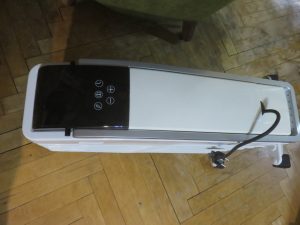
To get it open one has to remove 2 screws and slide teh front down:
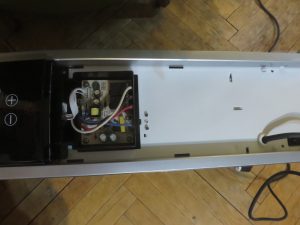
The top can be removed too after that and after removing the handle.

Three more screws later the next front layer can be taken off, that is as much as we need to disassemble to access all parts we need to access:

Removing the lower board is trivial, just remove screws and disconnect cables:
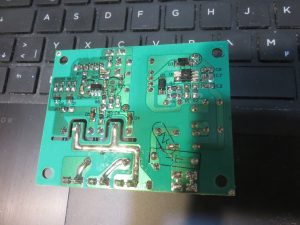
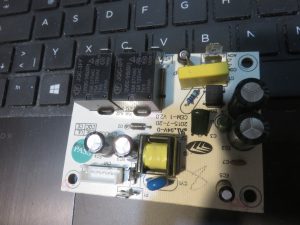
Next the 2 noisy relays are desoldered:
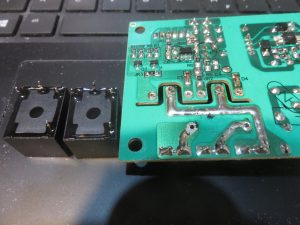
To replace the relays 2 solid state relays from ali express are added, they are rated at several times the needed current (i expected the rating to be exaggerated when i ordered and wanted to make sure they arent underrated but it seems the seller actually was honest with the rating). Careful attention is also paid to their heat-sinking requirement (which is none at the currents they would be used with).
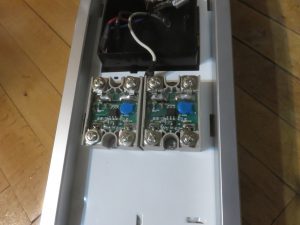
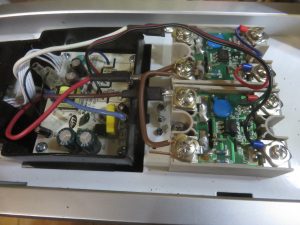
And a quick tests shows they are working fine and also have a pretty red led indicating that they are on:
btw, they are lacking their top cover because the heater could not be closed with it on, and it serves no purpose in this case
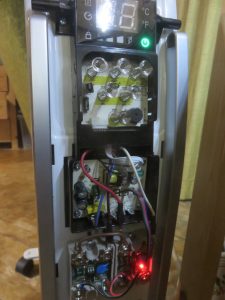
And now i have a silent electric oil heater radiator thing … click …WTF
Was there some part expanding from the heat and making a noise ? something on the 2nd board i didnt look at ?
I had it already reassembled and had to disassemble it again to trace where that came from. The radiator is rated for 2000W, one circuit 700 W or so and the other the rest to get to 2000W. It contains a fixed mechanical thermostat that disables both heating elements in case of overheat. and the 1300W heater has its own mechanical thermostat which disables just it at 85°C. The surprising thing here (to me) was that 85°C is easily exceeded by the 700W element alone. So the heater rating of 2000W is misleading at best because the heater under normal conditions will only heat with the 700W element continuously. The 2000W will just be used for a short period. After learning about that ive checked the shop where it was bought long ago and looking at heaters rated at 700W (which they have too and which are smaller) one quickly finds customer complaints that the 700W units switch off and are unable to sustain heating at 700W. This is Europa not China :( I did not expect to find this …
Ok back to the silencing, the solution here is in fact very simple. As the 2000W and 1300W modes are fake and only sustain 700W anyway and i have to assume for a good reason. The solution is to simply disable the 1300W part.
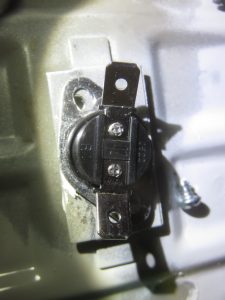
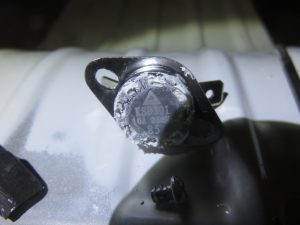

With that change the radiator is now actually silent and also looks cooler with the relay led shining through the front. Looking at the images i regret a bit that i hadnt thought about replacing the front by a transparent polycarbonate window. it would have looked cooler ;)
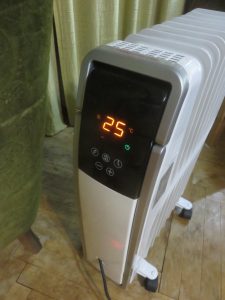
You need mechanical cut off in case of overheat. The solid state relays seem to short out when they break, meaning that they will remain in always ON state.
Check out the maximum temperature that the radiator gets and find something that would cut off when it is more. Some boiler protection elements have tunable temperature and need manual reset in case they trigger.
About the SSR.
When you pick elements for commutation, they need to be at least 3 times over the nominal current/voltage. That rule is mostly when you have inductive/capacitive load as the switching process may actually produce such voltage (because they store energy).
Radiators are mostly active(resistance) load, and quite big at that, so they may not need such overhead, still better safe than sorry.
Comment by iive — 2019-02-12 @ 12:05
There are 2 independent cut off switches in addition to the SSR still in it. You can see them on https://guru.multimedia.cx/wp-content/uploads/2018/11/IMG_1859-small.jpg
IIRC one was a manually reset-able mechanical thermostat (probably using bi-metal) with a button on it to reset the 2nd i believe was some sort of thermal fuse which would require to be exchanged if it trips, not 100% sure about this one. But even if both fail being continuous on at 700W i doubt this can overheat without it being wraped in a blanket or something, its too much surface area for 700W.
About the SSR, the 2 used where rated at 40 ampere, i thought the rating was visible on some pic but maybe not, if they actually do 40A or its just written on them is another question of course, i do not have means to test 40A relays at their maximum rating …
Comment by Michael — 2019-02-12 @ 23:09
Then everything is perfect.
1320W/220V = 6A
That’s over 6 times the advertised SSR rate.
I’m also puzzled why there is separate mechanical cut-off thermostat at 85°C, especially given that it has fully electronic control, with temperature measurement and stuff.
Comment by iive — 2019-02-13 @ 18:49